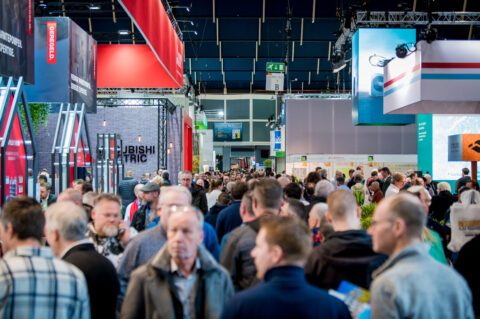Why is it still allowed to build single-storey distribution centres in urban areas? This is one of the many questions at the centre of the ICT & Logistica and Logistica Next trade shows, which will take place from 8 to 10 November at Royal Jaarbeurs. The Netherlands is missing opportunities by building almost exclusively single-storey distribution centres in urban areas. By combining, stacking and cleverly automating logistics functions, it is possible to realise multi-storey buildings that require less use of space, generate less traffic pressure, consume less energy and encroach less on the landscape. During ICT & Logistiek and Logistica Next, three renowned consultants and a real estate developer explain what these distribution centres of the future could look like.
Going up
They are already being used in urban areas abroad: the distribution centres of the future. Logistics consultant Eric Hereijgers is involved in the construction of a more than 40-metre-high distribution centre in Istanbul. The building actually consists of four warehouses stacked on top of each other: two with a free height of eight metres and two with a free height of 13 metres. Eric Hereijgers, logistics consultancy and engineering firm St Onge: "The bottom layer is set up as a parcel carrier's sorting centre. This is where parcels are sent that are prepared in the upper three layers. Thanks to this vertical integration, they do not have to be transported to an external sorting centre first, as in the Netherlands. That saves a lot of freight traffic."
Clustering, stacking and automation
In collaboration with Top Sector Logistics, René Geujen (Next Level Development), Radboud olde Scheper (Riverland Supply Chain Consultancy), Raymond Tukker (TICM) and Eric Hereijgers (St Onge Company) advocate a different view of distribution centres. By cleverly clustering, stacking and automating different logistics functions, it is possible to find solutions to various social issues. "Take a normal manual warehouse with reach trucks as we see everywhere in the Netherlands along the highways. In such a warehouse, at most 10 per cent of the cubic metres are used for storing goods. In a fully automated warehouse, the storage density is at least three times higher, so we need fewer square metres. Not to mention that we can build an automated warehouse three times higher," Eric Hereijgers argues.
Role of governments
Local governments can do more to encourage the clustering and stacking of logistics functions. "Stacking warehouses on top of each other is not only more expensive than placing warehouses side by side, but also hugely complex in terms of design and regulations. As a result, it is currently not made interesting for project developers to invest in a multilayer distribution centre," Eric Hereijgers argues. According to him, what does not help is that governments set rigid and outdated limits on the maximum height of distribution centres. "A height of 12 or 15 metres might make sense for buildings on the edge of a business park. If you then place a 40-metre building in the middle of the site, it is hardly noticeable from a distance. In doing so, multi-storey building can also provide an answer to discussion about withering of the landscape."












